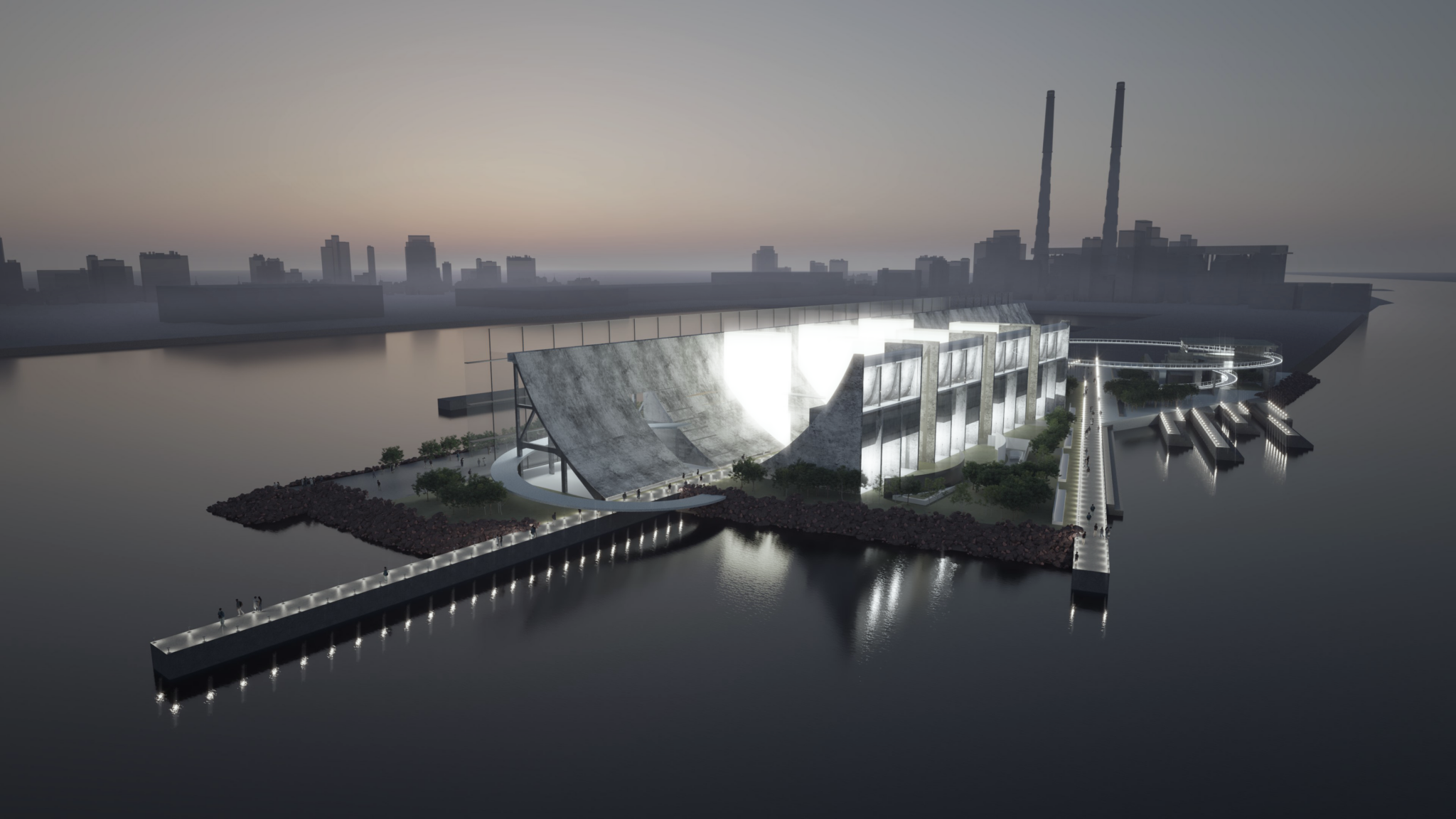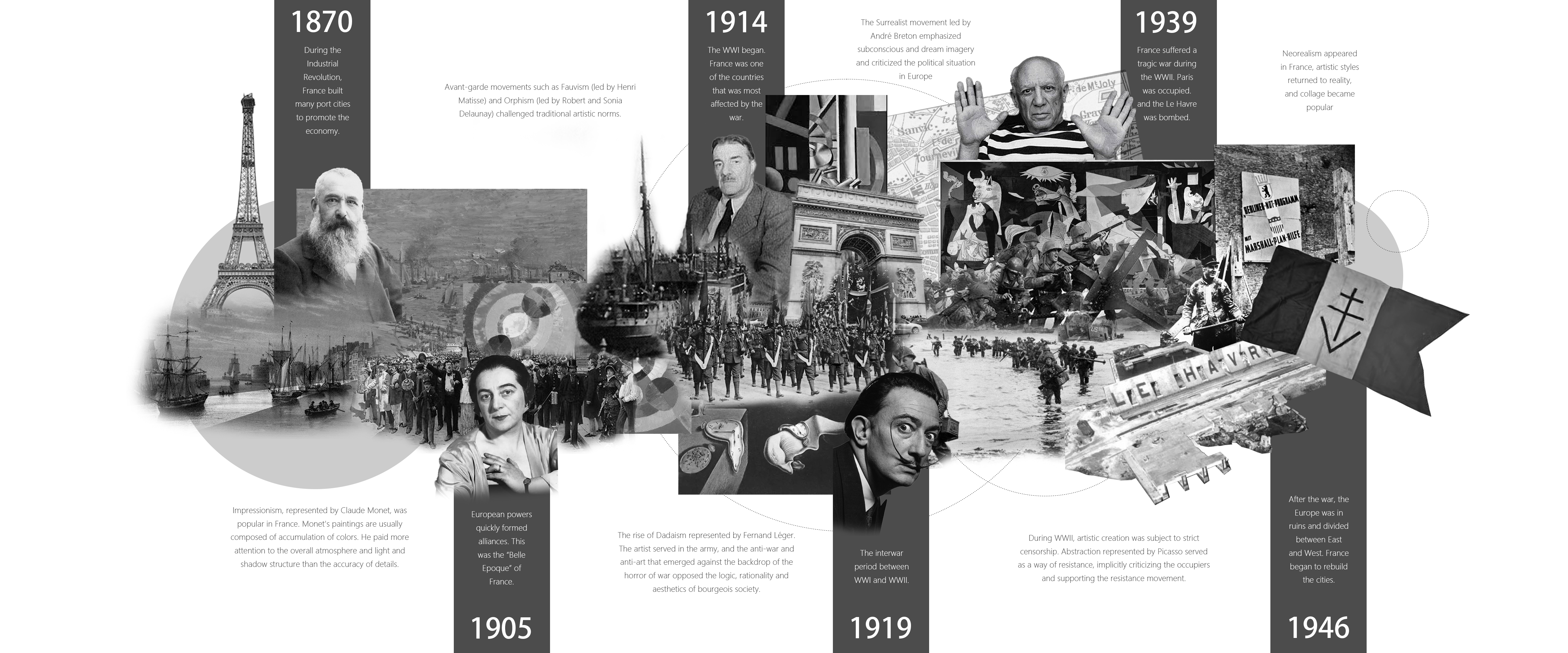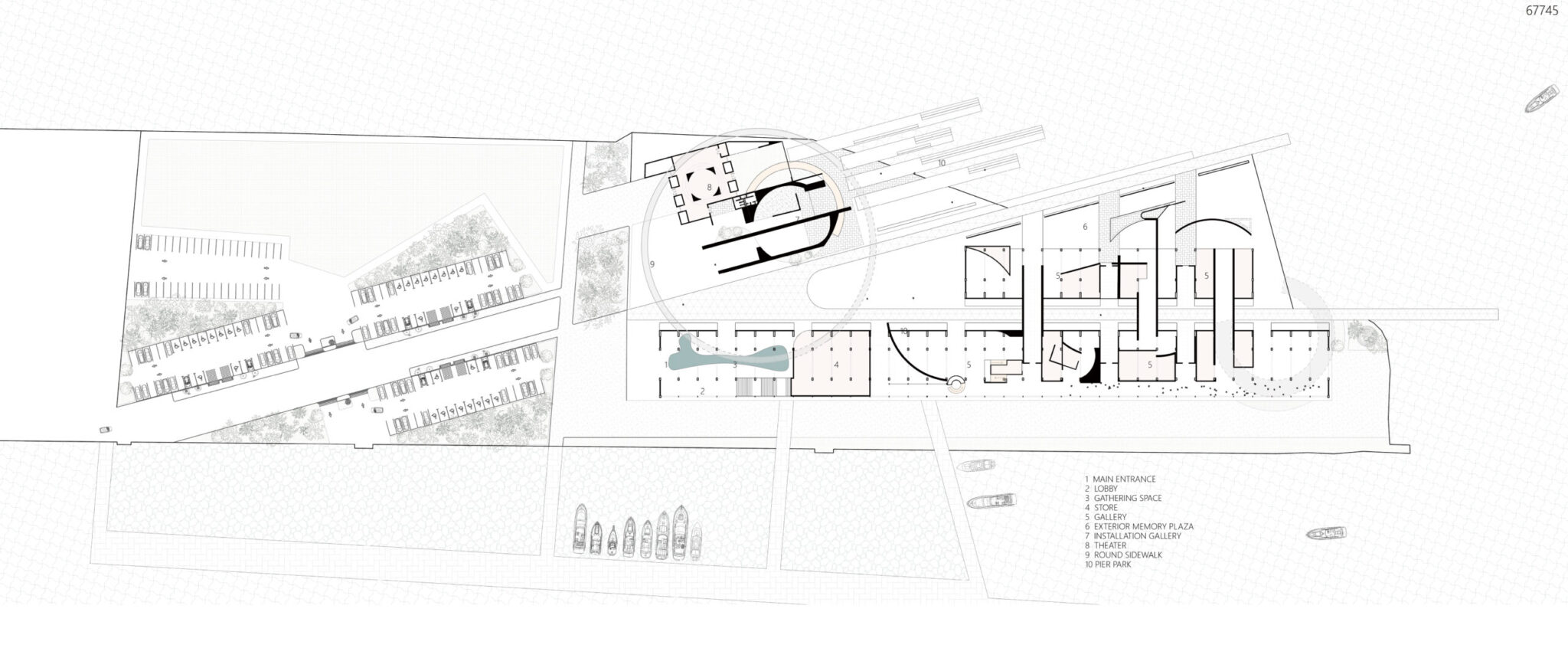War and Art History Museum At Brise Vent Havre
Le Havre, France / Fall 2024
Team: Dengyu Zou, Ming Chen, Yujing Chen
The design envisions a war and art history museum that serves as both a sanctuary of memory and a radiant beacon, guiding the city’s people and sailors alike. Perched on a site rich with layers of historical significance, our concept is anchored by two main pathways, tracing the lines of historical and urban axises, inviting visitors to embark on a journey through both the physical space and the deeply embedded narratives of the past. These pathways, framed by a harmonious grid system, offer structure and flexibility, while gently guiding exploration and contemplation at every turn.
Exhibition spaces are artfully embedded within the original structure, like vibrant gems in an architectural tapestry, breathing new life into the existing form. These spaces, thoughtfully arranged, offer myriad opportunities for discovery, allowing visitors to experience history and art from multiple perspectives. Circular elements have been woven into the design, creating a sense of fluidity between exhibitions and offering an immersive, almost dreamlike journey that seamlessly flows from one experience to the next.
The museum, poised at the edge of the sea, functions as a literal and symbolic lighthouse. For those on the water, its physical form casts a guiding light, while for those exploring within, it illuminates the city’s wartime memories, shining light on the forgotten stories and honoring those who came before. This dual symbolism enhances the museum’s identity as a beacon, one that not only reflects history but also helps shape how we remember it.
By thoughtfully balancing historical preservation with modern design interventions, we have crafted a space that stands as a cultural landmark, where the stories of the past are not only remembered but actively engage with the present, forever casting light on the future.

History Study
The timeline traces France’s artistic and societal shifts from 1870 to 1946, beginning with the Industrial Revolution, when Impressionism emerged, led by Monet, emphasizing light and atmosphere over detail. The early 1900s, known as the “Belle Époque,” saw avant-garde movements like Fauvism and Orphism challenge traditional artistic norms. World War I brought significant turmoil, giving rise to Dadaism, which rejected rationality and opposed war. During the interwar period, Surrealism, led by Breton, focused on the subconscious and critiqued politics. In World War II, art became a form of resistance against censorship and occupation, with Picasso’s abstract works subtly opposing the occupiers. Post-war France began reconstruction, and Neorealism emerged, reflecting reality and incorporating collage techniques as a response to the recent hardships.


